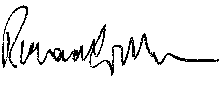Innovation is the application of new solutions that meet new requirements, inarticulate needs, or existing market needs,” Wikipedia tells us. “This is accomplished through more effective products, processes, services, technologies, or ideas that are readily available to markets, governments and society.”
That sounds pretty straightforward: it seems that we are all just one great idea away from an innovation. Actually, as some of you will know, successful innovation in analytical science bears an uncanny resemblance to the Olympic 3,000m steeplechase, with its 28 barriers and seven water jumps. It’s a gruelling undertaking. Worse, you don’t truly have an innovation until it has been widely adopted in the field, so the final giant hurdle isn’t even in your own hands. Yet, innovation is the lifeblood of this field. More by good fortune than by design, several virtuosos share their experiences in this issue. The patience and fortitude, as well as scientific brilliance, required of innovators shines through in interviews with mass spectrometrists Graham Cooks and Richard Smith, and in Mary Wirth’s account of the development of submicrometer chromatography. Mary rightly acknowledges the importance of peer review – the sceptic-built barricade that stops lesser ideas in their tracks – and rightly concludes that simply observing something interesting isn’t enough, you have to explain it too. Another imaginative innovation, the use of smart phones as biosensors, is described in the Upfront section. Converting innovative science to innovative products is Neil Lewis’ theme; the Bioscience Development Initiative is a bold new collaborative approach to developing tools that meet the analytical needs of the biopharmaceutical industry. Expect others to follow this lead. The drive behind pioneering developments is, of course, to increase effectiveness and to solve previously intractable problems. These are richly illustrated in Jaap de Zeeuw’s discussion of selective GC stationary phases and in the transformative impact that acoustic liquid handling could have on drug discovery. Our field is a hotbed of innovation. To recognize the most impactful, we are preparing to launch a search for the Top 10 Innovations in Analytical Science: submissions will be invited shortly. Watch this space.
Richard Gallagher
Editorial Director





